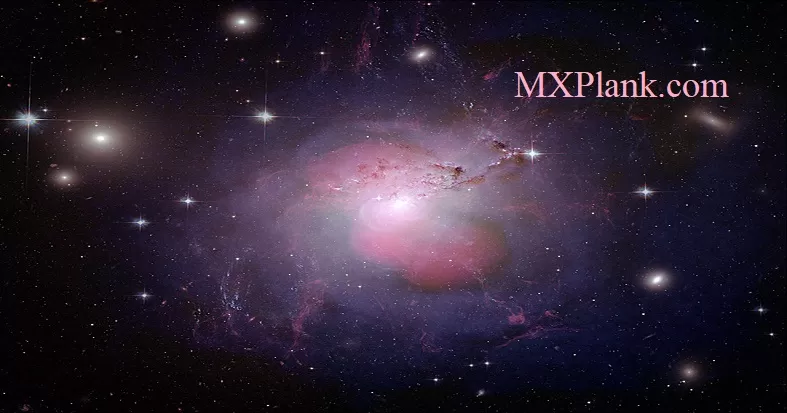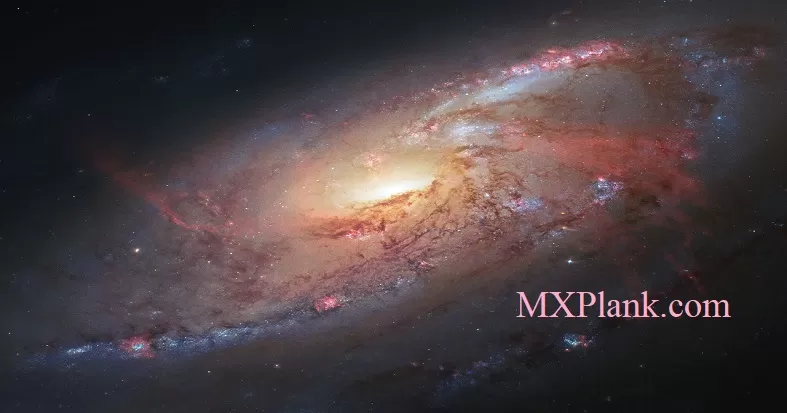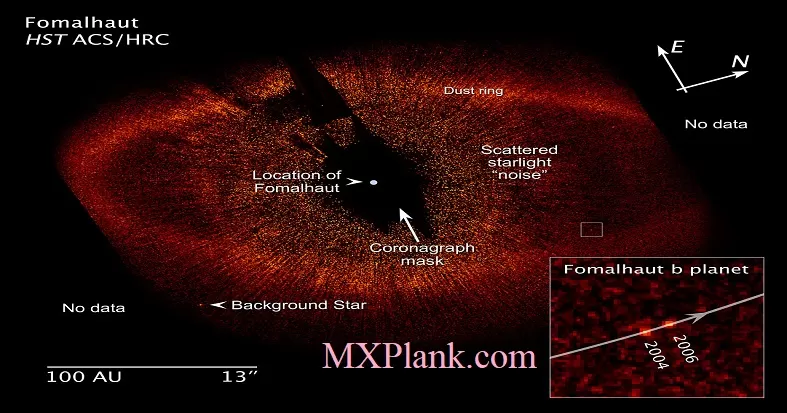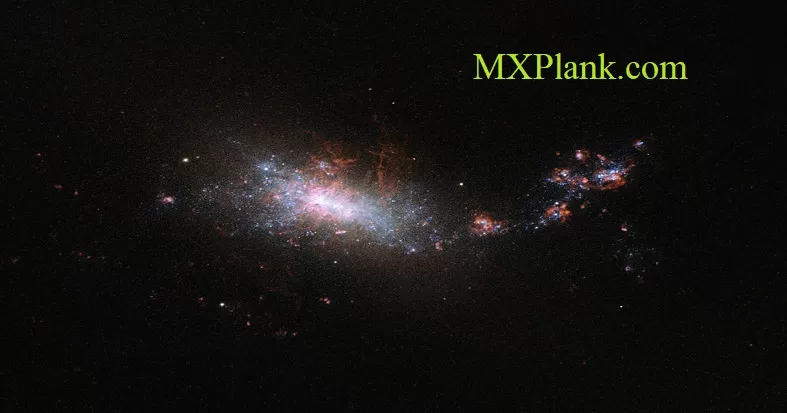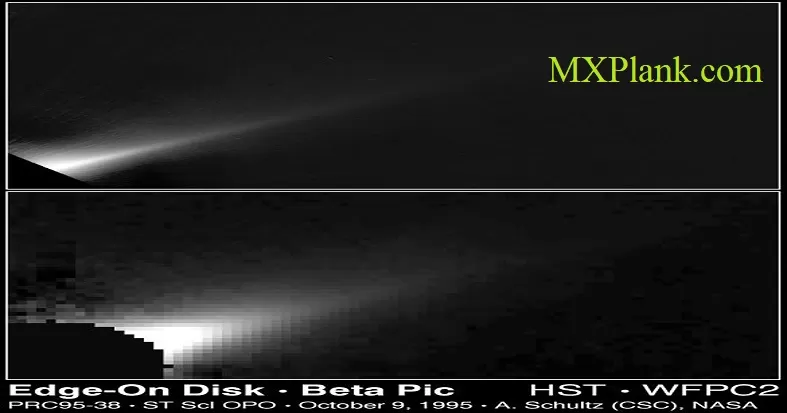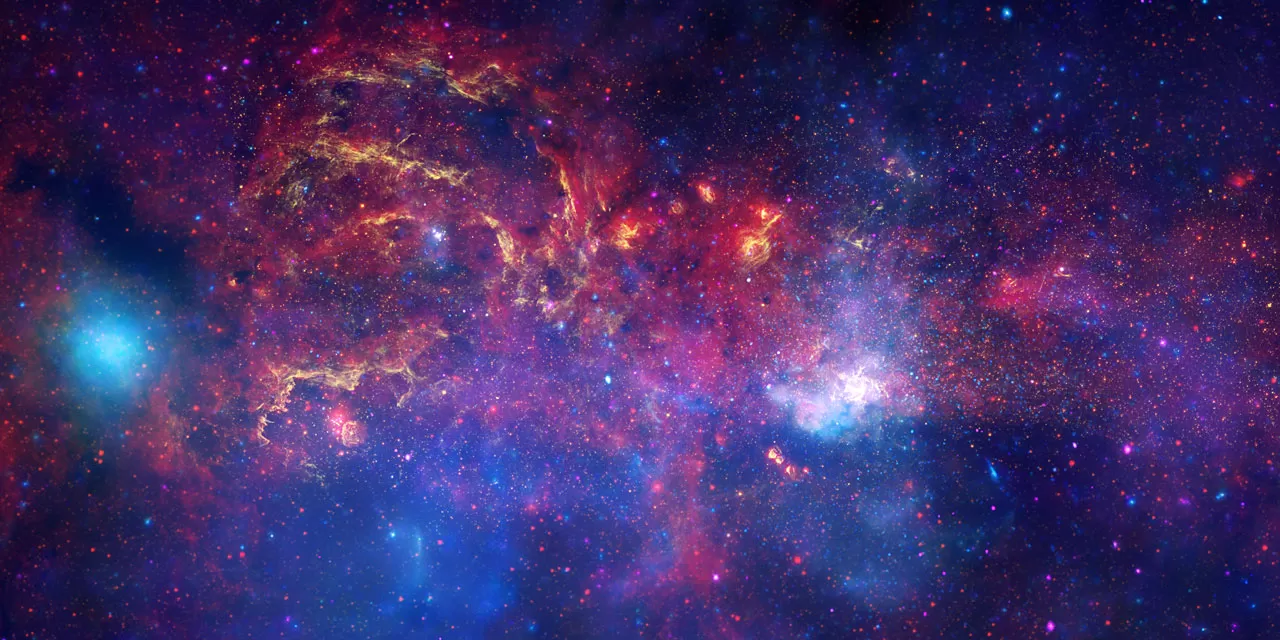Interacting galaxy (ground-based image)
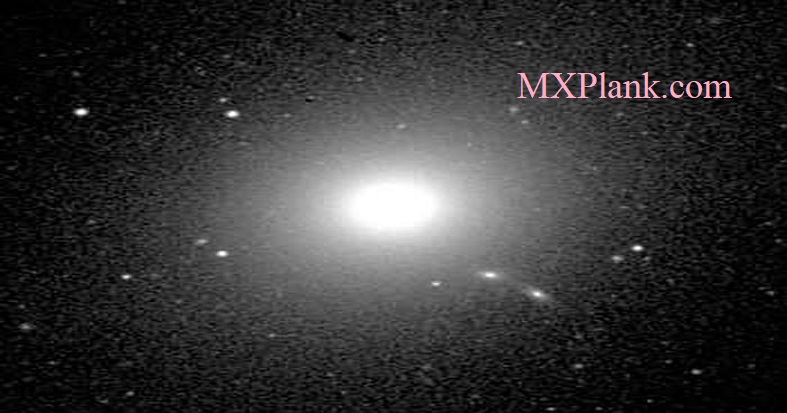
An "interacting galaxy" is one that is in the process of being affected by another galaxy. This is not an uncommon occurrence as galaxies are rarely found in isolation. Most are surrounded by a swarm of satellite galaxies and are themselves embedded in larger aggregates called groups or clusters.
Interactions can disturb, or even radically change, the morphologies of the galaxies involved, often inducing new bursts of star formation. The most common interaction is known as a 'fly-by' and involves two or more galaxies (which do not actually come into contact) approaching close enough that the gravitational field of each galaxy influences the gravitational fields of the others. These high speed encounters can create new structures such as warps or bars, or even tidal tails that extend well beyond the main body of the galaxy.
An impressive example of an interacting galaxy is the Cartwheel galaxy. This galaxy was similar to our own Milky Way until quite recently, when a smaller galaxy (probably one of the galaxies on the right) ploughed through its centre. The interaction has created spokes of stars and gas, and a bright blue ring of new star formation. This has resulted in a wheel-like appearance for the galaxy and its descriptive name.
A giant galaxy interacting with its satellites is common. A satellite's gravity could attract one of the primary's spiral arms. Alternatively, the secondary satellite can dive into the primary galaxy, as in the Sagittarius Dwarf Elliptical Galaxy diving into the Milky Way. That can possibly trigger a small amount of star formation. Such orphaned clusters of stars were sometimes referred to as "blue blobs" before they were recognized as stars
Colliding galaxies are common during galaxy evolution. The extremely tenuous distribution of matter in galaxies means these are not collisions in the traditional sense of the word, but rather gravitational interactions.
Colliding may lead to merging if two galaxies collide and do not have enough momentum to continue traveling after the collision. As with other galaxy collisions, the merging of two galaxies may create a starburst region of new stars. In that case, they fall back into each other and eventually merge into one galaxy after many passes through each other. If one of the colliding galaxies is much larger than the other, it will remain largely intact after the merger. The larger galaxy will look much the same, while the smaller galaxy will be stripped apart and become part of the larger galaxy. When galaxies pass through each other, unlike during mergers, they largely retain their material and shape after the pass.
Galactic collisions are now frequently simulated on computers, which use realistic physics principles, including the simulation of gravitational forces, gas dissipation phenomena, star formation, and feedback. Dynamical friction slows the relative motion galaxy pairs, which may possibly merge at some point, according to the initial relative energy of the orbits.
Galactic cannibalism is a common phenomenon that occurs in the universe, which refers to the process in which a large galaxy, through tidal gravitational interactions with a companion, merges with that companion; that results in a larger, often irregular galaxy.
The most common result of the gravitational merger between two or more galaxies is an irregular galaxy, but elliptical galaxies may also result.
It has been suggested that galactic cannibalism is currently occurring between the Milky Way and the Large and Small Magellanic Clouds. Streams of gravitationally-attracted hydrogen arcing from these dwarf galaxies to the Milky Way is taken as evidence for the theory.
Galaxy harassment is a type of interaction between a low-luminosity galaxy and a brighter one that takes place within rich galaxy clusters, such as Virgo and Coma, where galaxies are moving at high relative speeds and suffering frequent encounters with other systems of the cluster by the high galactic density of the latter. According to computer simulations, the interactions convert the affected galaxy disks into disturbed barred spiral galaxies and produces starbursts followed by, if more encounters occur, loss of angular momentum and heating of their gas.
The result would be the conversion of (late type) low-luminosity spiral galaxies into dwarf spheroidals and dwarf ellipticals.
Evidence for the hypothesis had been claimed by studying early-type dwarf galaxies in the Virgo Cluster and finding structures, such as disks and spiral arms, which suggest they are former disk systems transformed by the above-mentioned interactions. However, the existence of similar structures in isolated early-type dwarf galaxies, such as LEDA 2108986, has undermined this hypothesis
Astronomers have estimated the Milky Way Galaxy will collide with the Andromeda Galaxy in about 4.5 billion years. It is thought that the two spiral galaxies will eventually merge to become an elliptical galaxy or perhaps a large disk galaxy.
Interactions can disturb, or even radically change, the morphologies of the galaxies involved, often inducing new bursts of star formation. The most common interaction is known as a 'fly-by' and involves two or more galaxies (which do not actually come into contact) approaching close enough that the gravitational field of each galaxy influences the gravitational fields of the others. These high speed encounters can create new structures such as warps or bars, or even tidal tails that extend well beyond the main body of the galaxy.
An impressive example of an interacting galaxy is the Cartwheel galaxy. This galaxy was similar to our own Milky Way until quite recently, when a smaller galaxy (probably one of the galaxies on the right) ploughed through its centre. The interaction has created spokes of stars and gas, and a bright blue ring of new star formation. This has resulted in a wheel-like appearance for the galaxy and its descriptive name.
A giant galaxy interacting with its satellites is common. A satellite's gravity could attract one of the primary's spiral arms. Alternatively, the secondary satellite can dive into the primary galaxy, as in the Sagittarius Dwarf Elliptical Galaxy diving into the Milky Way. That can possibly trigger a small amount of star formation. Such orphaned clusters of stars were sometimes referred to as "blue blobs" before they were recognized as stars
Colliding galaxies are common during galaxy evolution. The extremely tenuous distribution of matter in galaxies means these are not collisions in the traditional sense of the word, but rather gravitational interactions.
Colliding may lead to merging if two galaxies collide and do not have enough momentum to continue traveling after the collision. As with other galaxy collisions, the merging of two galaxies may create a starburst region of new stars. In that case, they fall back into each other and eventually merge into one galaxy after many passes through each other. If one of the colliding galaxies is much larger than the other, it will remain largely intact after the merger. The larger galaxy will look much the same, while the smaller galaxy will be stripped apart and become part of the larger galaxy. When galaxies pass through each other, unlike during mergers, they largely retain their material and shape after the pass.
Galactic collisions are now frequently simulated on computers, which use realistic physics principles, including the simulation of gravitational forces, gas dissipation phenomena, star formation, and feedback. Dynamical friction slows the relative motion galaxy pairs, which may possibly merge at some point, according to the initial relative energy of the orbits.
Galactic cannibalism is a common phenomenon that occurs in the universe, which refers to the process in which a large galaxy, through tidal gravitational interactions with a companion, merges with that companion; that results in a larger, often irregular galaxy.
The most common result of the gravitational merger between two or more galaxies is an irregular galaxy, but elliptical galaxies may also result.
It has been suggested that galactic cannibalism is currently occurring between the Milky Way and the Large and Small Magellanic Clouds. Streams of gravitationally-attracted hydrogen arcing from these dwarf galaxies to the Milky Way is taken as evidence for the theory.
Galaxy harassment is a type of interaction between a low-luminosity galaxy and a brighter one that takes place within rich galaxy clusters, such as Virgo and Coma, where galaxies are moving at high relative speeds and suffering frequent encounters with other systems of the cluster by the high galactic density of the latter. According to computer simulations, the interactions convert the affected galaxy disks into disturbed barred spiral galaxies and produces starbursts followed by, if more encounters occur, loss of angular momentum and heating of their gas.
The result would be the conversion of (late type) low-luminosity spiral galaxies into dwarf spheroidals and dwarf ellipticals.
Evidence for the hypothesis had been claimed by studying early-type dwarf galaxies in the Virgo Cluster and finding structures, such as disks and spiral arms, which suggest they are former disk systems transformed by the above-mentioned interactions. However, the existence of similar structures in isolated early-type dwarf galaxies, such as LEDA 2108986, has undermined this hypothesis
Astronomers have estimated the Milky Way Galaxy will collide with the Andromeda Galaxy in about 4.5 billion years. It is thought that the two spiral galaxies will eventually merge to become an elliptical galaxy or perhaps a large disk galaxy.
Credit:
NASA/ESA and The Hubble Heritage Team (STScI/AURA)
NASA/ESA and The Hubble Heritage Team (STScI/AURA)

